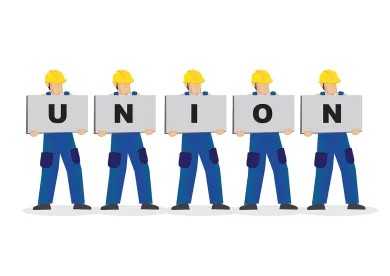On December 14, 2022, the National Labor Relations Board (the Board) issued a major decision in American Steel Construction that makes it easier for unions to petition for smaller units of an entire workforce for purposes of union representation. Once again this year, the Board’s 3-2 decision reversed a Trump-era ruling and returned to a standard originally set forth during the Obama administration.
The Board’s decision in American Steel Construction returned to the standard originally set forth in Specialty Healthcare for determining the scope of a bargaining unit. The Specialty Healthcare standard considers whether the employees in the petitioned-for unit share a community of interest, whether the petitioned-for unit is readily identifiable as a group based on job classifications, departments, functions, work locations, skills, or similar factors, and whether the petitioned-for unit is “sufficiently distinct.” The Board’s decision focused on whether the petitioned-for unit is “sufficiently distinct” or whether there is an “overwhelming community of interest” between the petitioned-for unit and the excluded employees in order to add the excluded employees to the petitioned-for unit.
This return to the standard set forth in Specialty Healthcare will make it more difficult for an employer contesting the petitioned-for unit’s appropriateness. Further, the Specialty Healthcare standard places the burden on an employer contesting the petitioned-for unit to demonstrate that the differences between the petitioned-for unit and the excluded employees are so minimal that it would be “arbitrary” or irrational to engage in the process of collective bargaining absent the excluded employees. This standard is exceedingly difficult to meet in most situations, meaning that the bargaining representative will have a greater opportunity to establish micro-units of organized labor within larger employer settings, a tremendous problem for employers that have employees covering multiple parts of their business.
The previous standard set out in PCC-Structurals, Inc. and Boeing, held that the petitioned-for unit was sufficiently distinct only if the excluded employees had meaningfully distinct interests in the context of collective bargaining that outweighed similarities with unit members.
Following this decision, expect unions to attempt to organize smaller bargaining units within a company, particularly where efforts to organize larger groups would be or have been unsuccessful. An election in a small unit is more advantageous to the union and could force employers to negotiate with multiple unions working toward different goals. Employers should review how their workforce is structured and other terms and conditions of employment to prepare for these unionization efforts.




 />i
/>i
